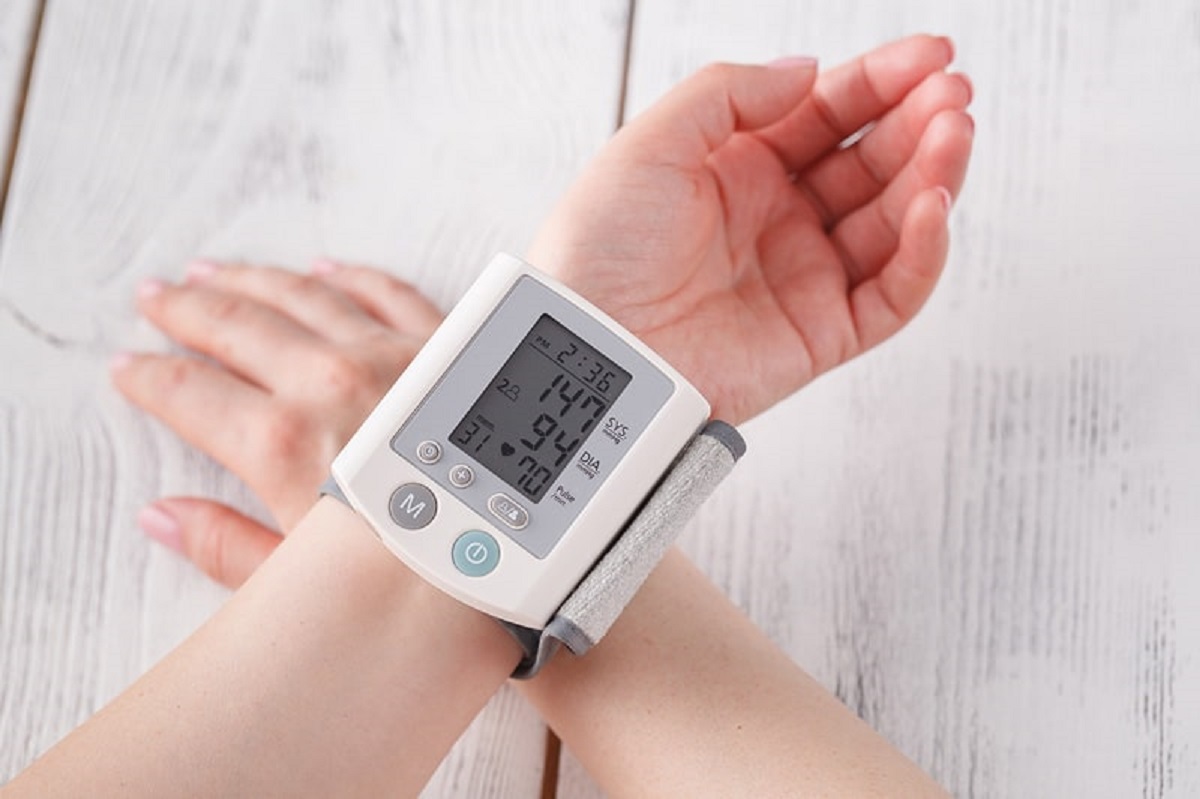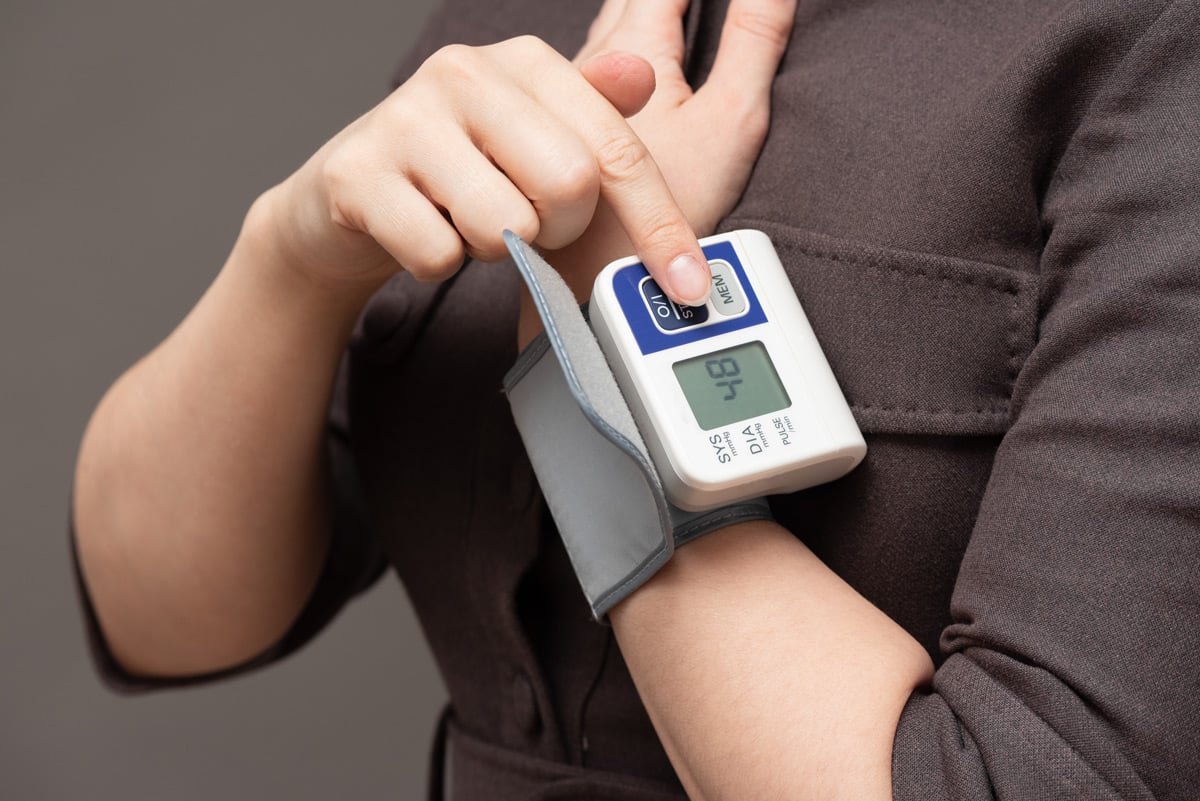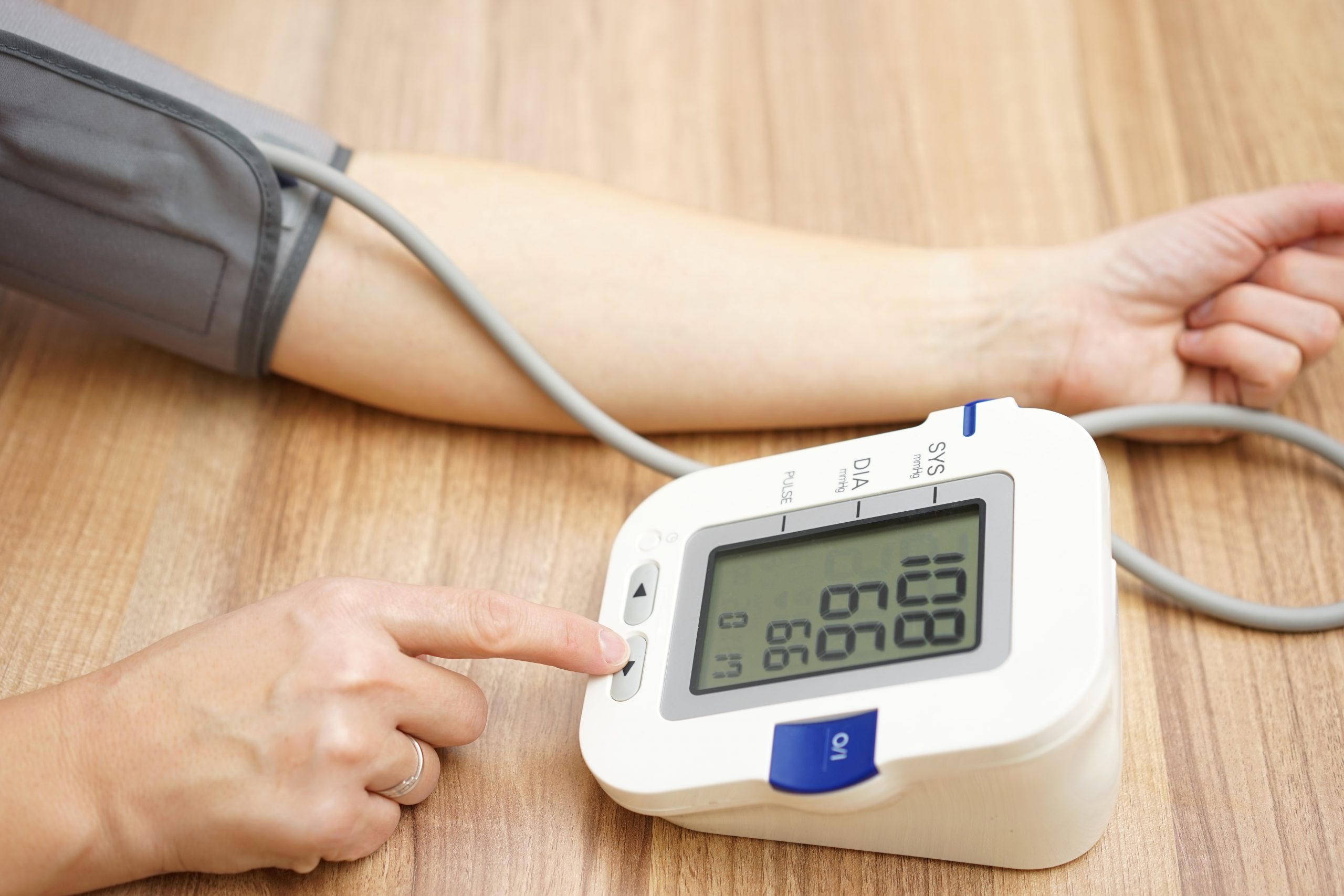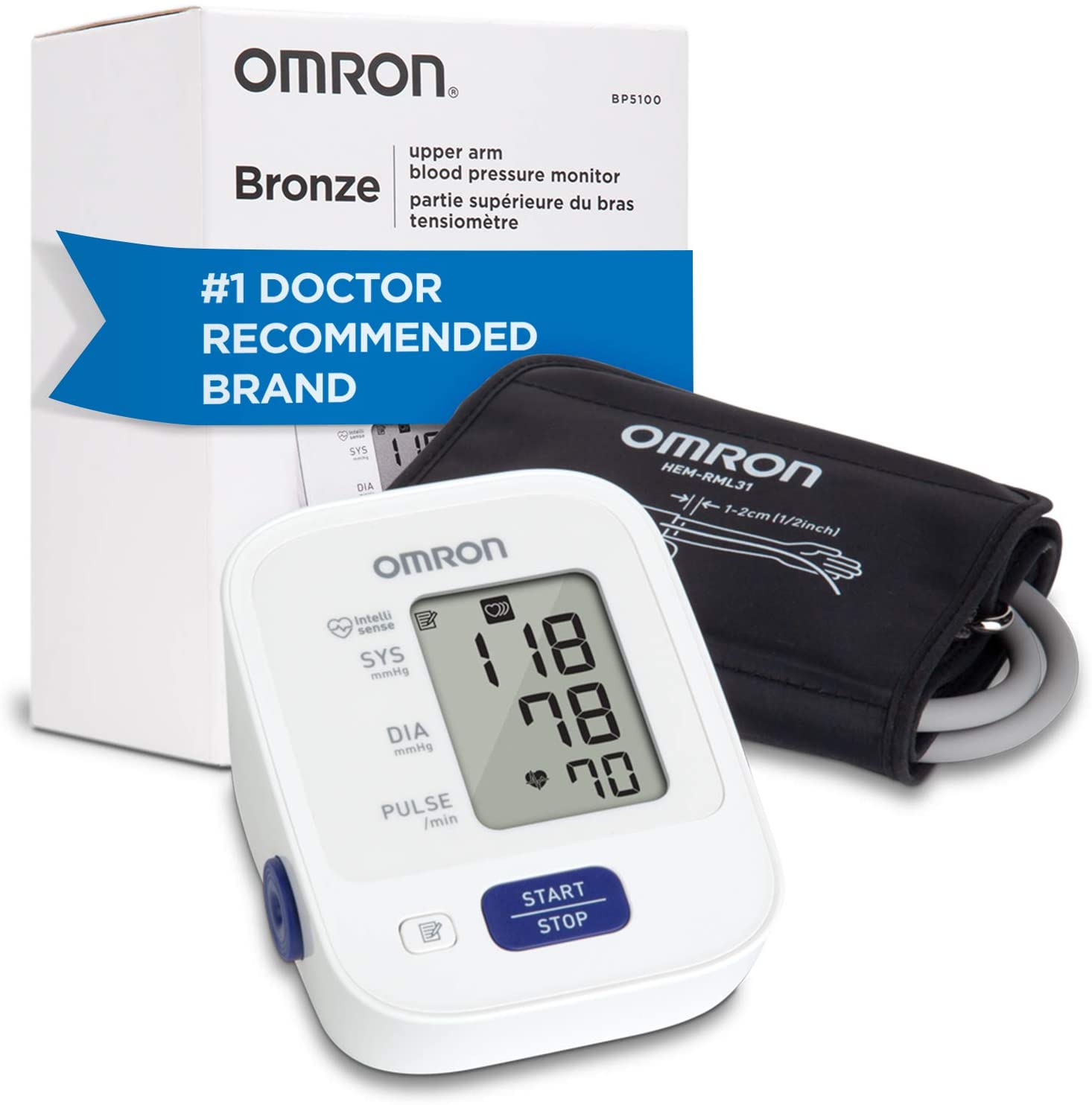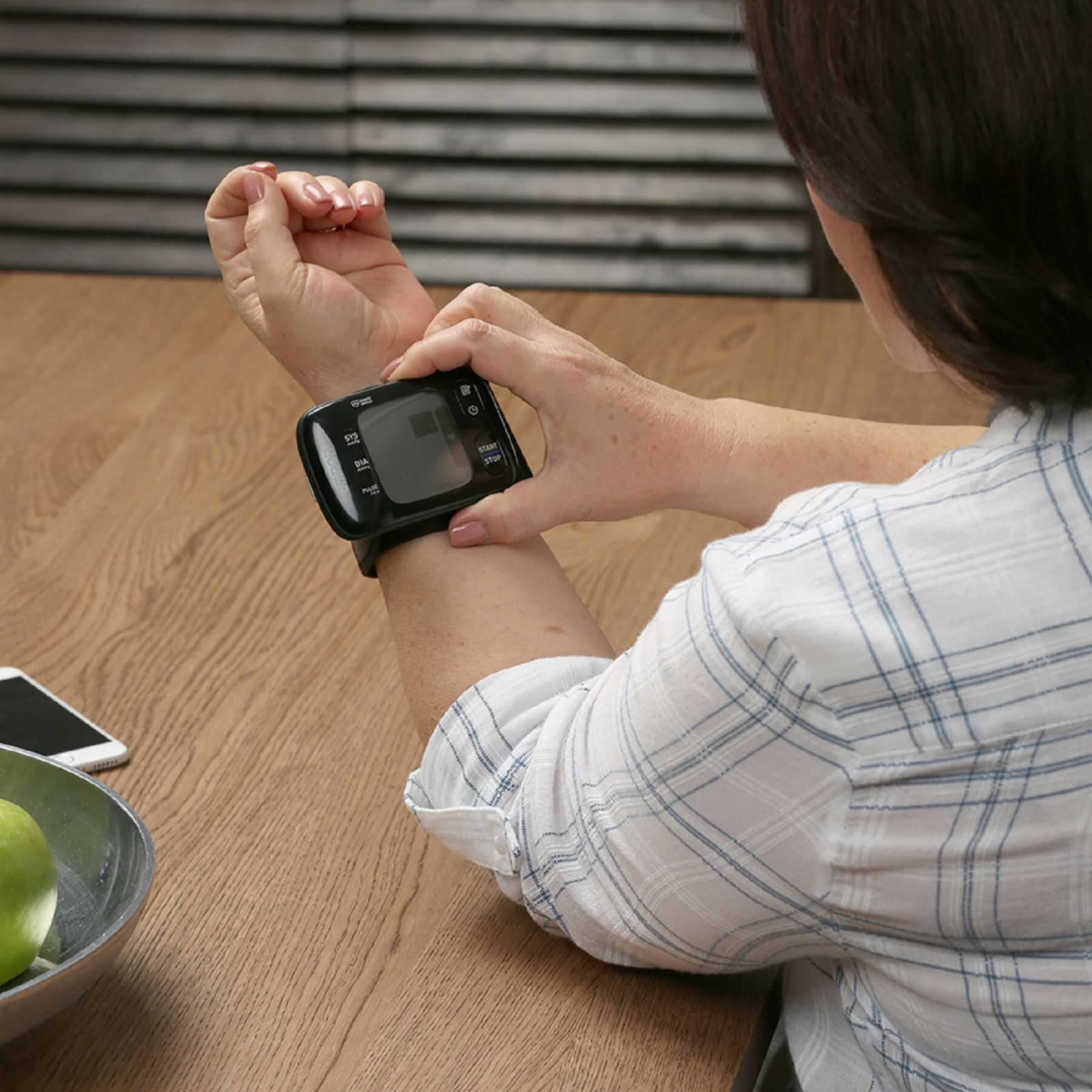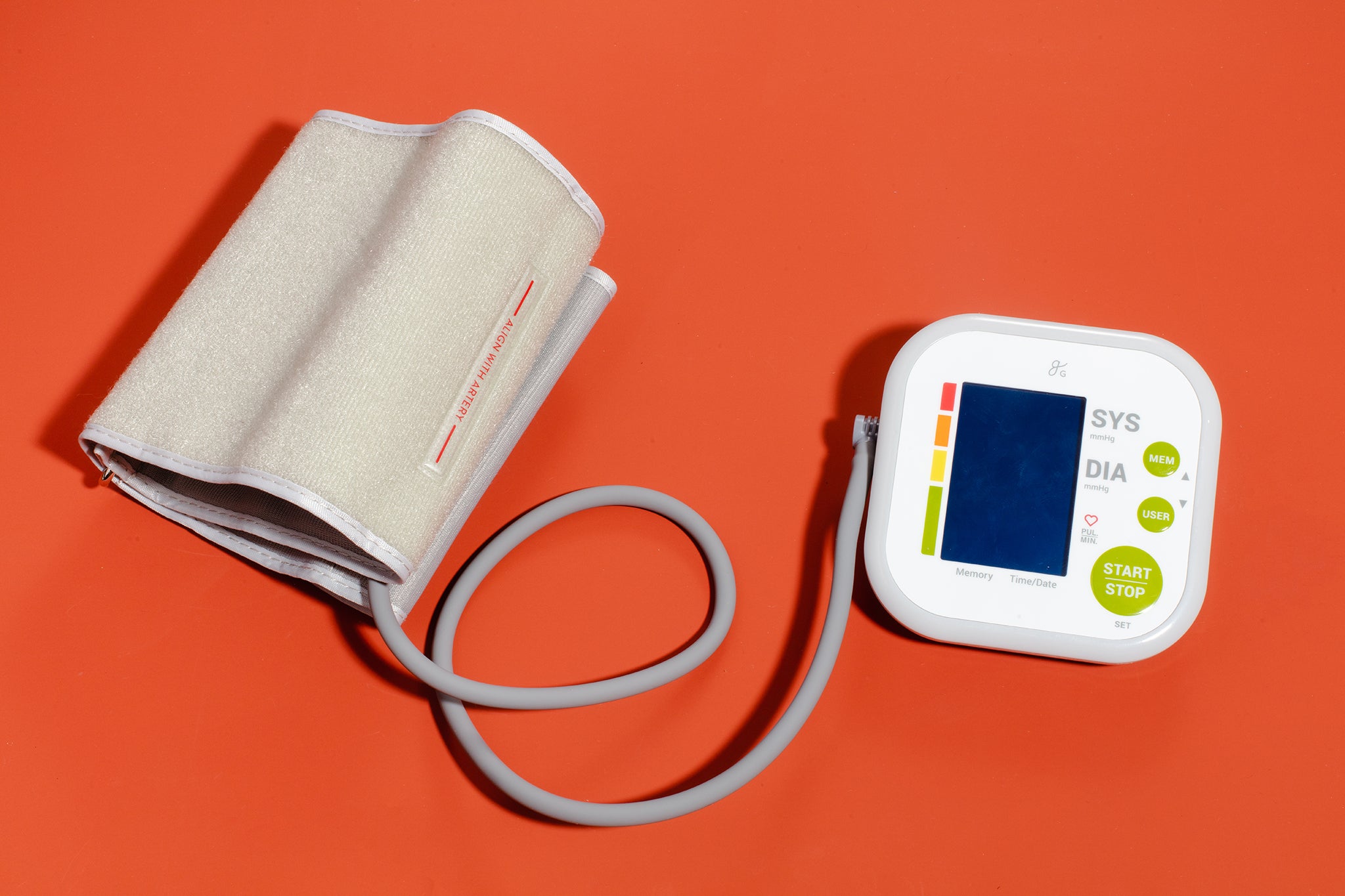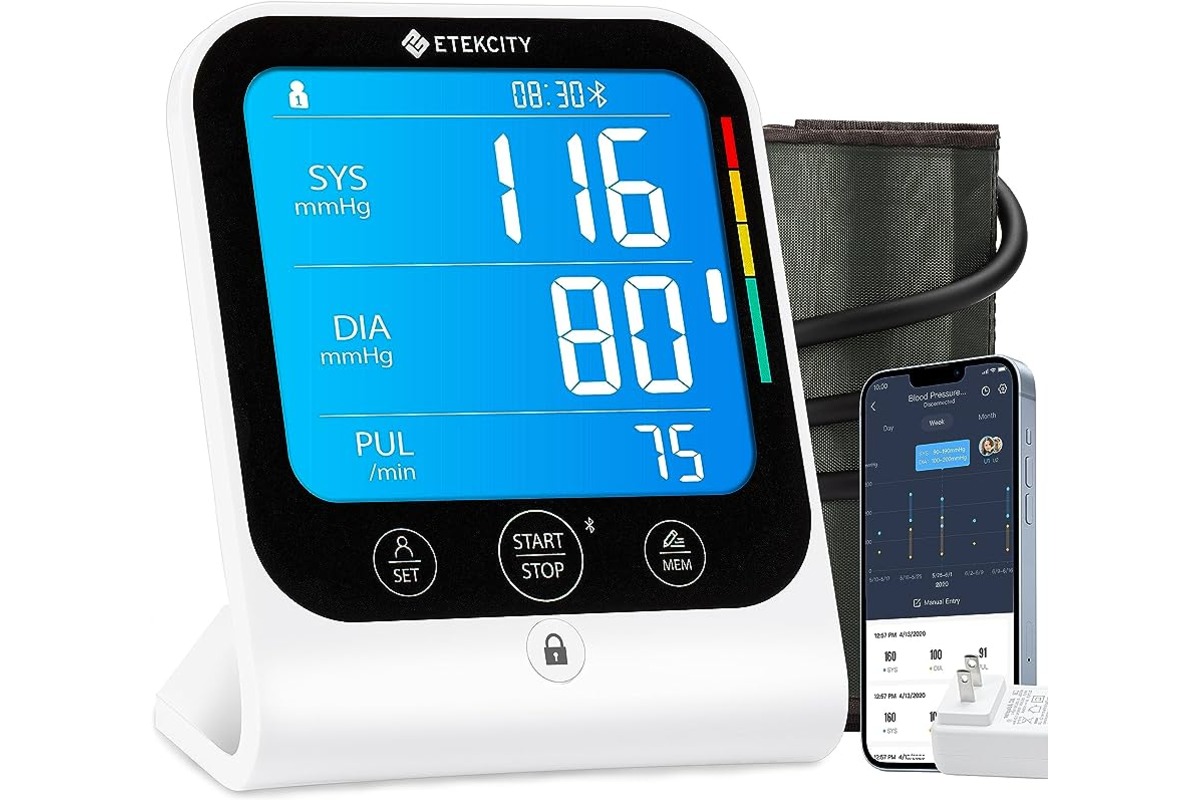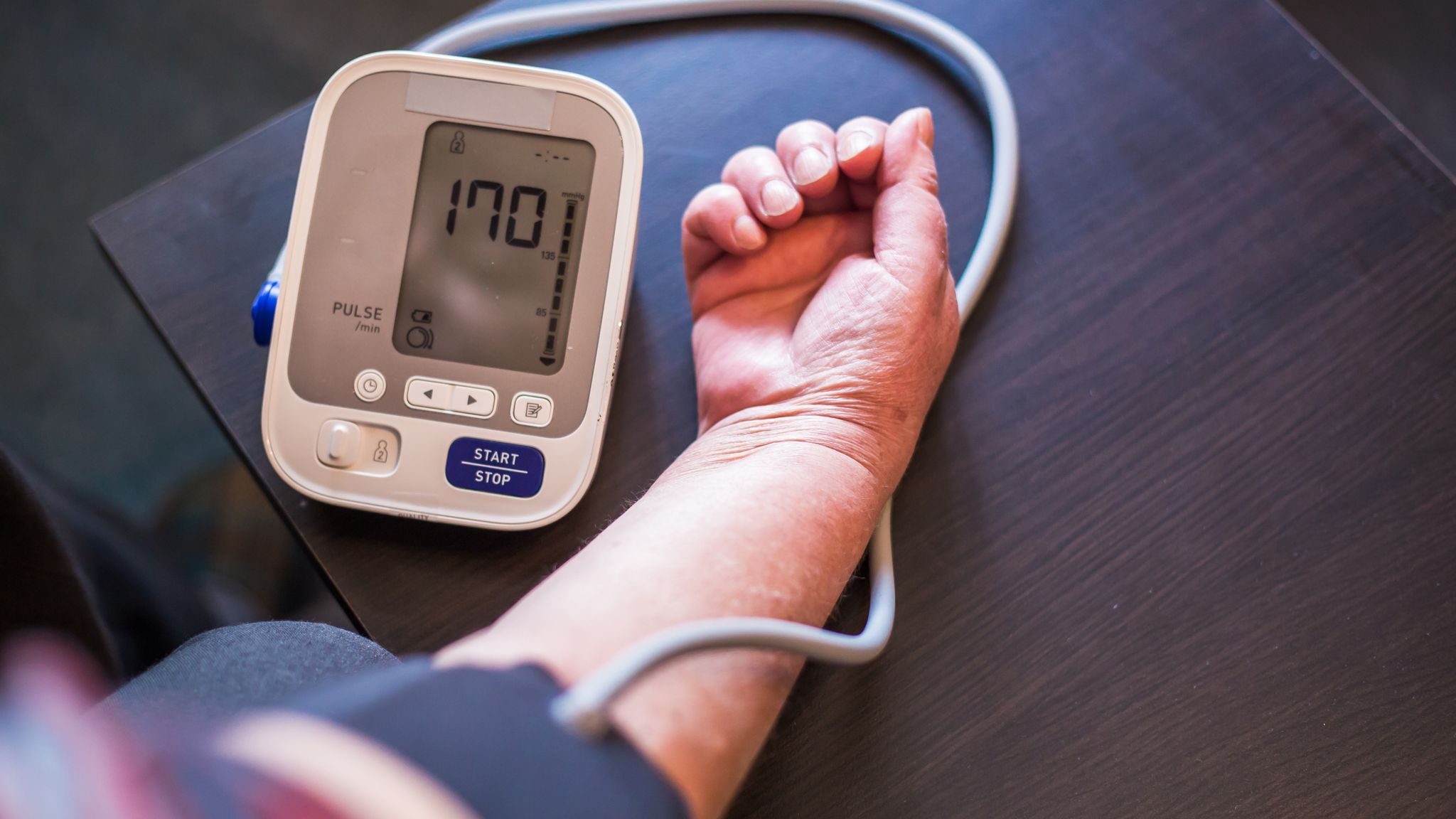Introduction
Welcome to our comprehensive guide on wrist blood pressure monitors and their accuracy. With the increasing prevalence of conditions like hypertension, monitoring blood pressure is becoming a critical part of maintaining overall health. While traditional upper arm blood pressure monitors are widely used and known for their accuracy, wrist blood pressure monitors are gaining popularity due to their convenience and portability.
In this guide, we will explore the different aspects of wrist blood pressure monitors, how they work, and their accuracy compared to upper arm monitors. We will also discuss factors that may affect the accuracy of wrist monitors and provide tips on ensuring accurate readings. By understanding the potential limitations and benefits of wrist blood pressure monitors, you can make an informed decision about which type of monitor is best suited for your needs.
Monitoring blood pressure is an essential component of managing hypertension, and regular measurements are necessary to track changes and ensure that treatment plans are effective. However, many individuals find traditional upper arm monitors cumbersome or uncomfortable to use on a daily basis. Wrist blood pressure monitors offer a practical solution, allowing for easy and convenient monitoring from the comfort of your own home or even on the go.
It is important to note that accuracy is a key concern when it comes to any blood pressure monitor. Consistently accurate readings are crucial to make informed decisions about your health and to provide accurate information to your healthcare provider. Therefore, understanding the accuracy of wrist blood pressure monitors is of paramount importance in order to rely on the readings they provide.
Throughout this guide, we will not only address the accuracy of wrist blood pressure monitors but also highlight important factors that may affect their readings. By the end, you’ll have a comprehensive understanding of wrist blood pressure monitors and be equipped with the knowledge needed to choose the right monitor for your individual needs.
Understanding Blood Pressure
Before delving into the specifics of how wrist blood pressure monitors work and their accuracy, it’s essential to have a clear understanding of what blood pressure is and why it matters for your health.
Blood pressure refers to the force exerted by circulating blood against the walls of your blood vessels. It is measured in two numbers: systolic pressure and diastolic pressure. The systolic pressure represents the force when the heart contracts and pumps blood into the arteries, while the diastolic pressure is the force when the heart is at rest between beats.
Blood pressure readings are typically given as two numbers, such as 120/80 mmHg. The first number represents the systolic pressure, while the second number represents the diastolic pressure. Blood pressure levels are categorized into different ranges, including normal, elevated, hypertension stage 1, and hypertension stage 2, with varying degrees of severity.
Maintaining a healthy blood pressure is important as high blood pressure, also known as hypertension, puts extra strain on the heart and blood vessels, increasing the risk of serious health problems, such as heart disease, stroke, and kidney disease. On the other hand, low blood pressure, known as hypotension, can cause dizziness and fainting, indicating that organs are not receiving adequate blood supply.
Regular blood pressure monitoring allows individuals to track changes in their blood pressure over time and make necessary adjustments to their lifestyle and treatment plans. It is a vital tool in managing and preventing hypertension.
Now that we have a clear understanding of the significance of blood pressure, let’s explore how wrist blood pressure monitors function and their effectiveness as a monitoring tool.
How Does a Wrist Blood Pressure Monitor Work?
Wrist blood pressure monitors are compact devices designed to measure blood pressure using oscillometric technology. Unlike traditional upper arm monitors that inflate a cuff around the upper arm, wrist monitors have a cuff that wraps around the wrist.
When you activate a wrist blood pressure monitor, it automatically inflates the cuff and then slowly deflates it while measuring the pressure fluctuations in the arteries within your wrist. These pressure fluctuations are detected by sensors in the cuff and converted into digital readings that display your systolic and diastolic pressures.
One advantage of wrist blood pressure monitors is their ease of use. The cuff is positioned on the wrist, making it accessible and comfortable for many individuals. Some models even have a color-coded indicator that helps users interpret their blood pressure readings in accordance with established guidelines.
However, it’s important to note that proper positioning of the cuff is crucial to obtain accurate readings. The cuff should be placed at heart level, and the user’s arm should be resting on a flat surface. Failure to position the cuff correctly may result in inaccurate readings.
It’s worth mentioning that some wrist blood pressure monitors also offer additional features, such as irregular heartbeat detection and memory storage to track and store previous readings. These added functionalities can be helpful for individuals who want to monitor their blood pressure trends over time or seek early detection of irregular heart rhythms.
While wrist blood pressure monitors are generally user-friendly and convenient, their accuracy is a topic of concern and debate. The next section will delve into the factors that can affect the accuracy of wrist blood pressure monitors to help you make an informed decision when choosing a monitor for your blood pressure monitoring needs.
Factors Affecting Accuracy
Several factors can influence the accuracy of wrist blood pressure monitors. Understanding these factors is essential to obtain reliable measurements and ensure accurate monitoring of your blood pressure.
One significant factor that can affect the accuracy of wrist blood pressure monitors is the proper positioning of the cuff. The cuff should be wrapped tightly around the wrist, but not too tight to cause discomfort or restrict blood flow. If the cuff is too loose or positioned incorrectly, it can lead to inaccurate readings. It’s important to follow the manufacturer’s instructions to ensure correct cuff placement.
Movement and body position can also impact the accuracy of readings from wrist blood pressure monitors. Any movement or changes in posture, such as talking, crossing the legs, or moving the arm, can disrupt the measurements and lead to inaccurate results. It is advisable to remain still and avoid talking during the measurement process to minimize the potential for error.
Another factor to consider is the size of the wrist. Wrist blood pressure monitors come with various cuff sizes, and it is crucial to choose the appropriate size that fits your wrist circumference. Using an ill-fitting cuff can affect the accuracy of the readings. Manufacturers often provide guidelines for selecting the correct cuff size, so be sure to refer to these guidelines when purchasing a wrist blood pressure monitor.
Some medical conditions and medications can also affect the accuracy of wrist blood pressure monitors. Conditions such as arrhythmias or irregular heartbeats may interfere with the monitor’s ability to detect accurate readings. Certain medications, such as beta-blockers or calcium channel blockers, can also affect blood flow and impact the accuracy of the measurements. If you have any underlying medical conditions or are taking medications, it is recommended to consult with your healthcare provider to determine if a wrist monitor is suitable for you.
Lastly, it’s important to note that wrist blood pressure monitors may produce slightly different readings compared to traditional upper arm monitors. The blood vessels in the wrist are narrower and closer to the skin surface, which can potentially lead to variations in the measurements. However, these differences are generally small and may not significantly impact the overall interpretation of blood pressure levels.
By keeping these factors in mind and following proper usage guidelines, you can improve the accuracy of wrist blood pressure monitor readings and ensure reliable monitoring of your blood pressure levels.
Importance of Proper Usage
Proper usage of a wrist blood pressure monitor is crucial to obtain accurate and reliable readings. Consistent and accurate readings are essential for effective blood pressure management and providing accurate information to your healthcare provider.
One of the key aspects of proper usage is following the manufacturer’s instructions. Each wrist blood pressure monitor may have specific instructions on how to position the cuff, when and how to take measurements, and how to interpret the readings. It is important to read and understand these instructions to ensure accurate measurements.
It is recommended to take measurements at the same time each day to establish a consistent routine. Preferably, measurements should be taken in the morning before any physical activity or consuming caffeine. This can help in getting more accurate and comparable readings over time.
Another important aspect is avoiding factors that can interfere with the accuracy of the readings. Factors such as smoking, exercise, and stress can temporarily raise your blood pressure, leading to higher readings. It is advisable to refrain from these activities for at least 30 minutes before measuring your blood pressure.
Proper posture and positioning are also critical for accurate readings. Sit in a chair with your feet flat on the floor and your back supported against the backrest. Rest your arm on a table or support surface at heart level, and ensure that the cuff is properly positioned on your wrist. If the cuff is too loose or placed incorrectly, it can result in inaccurate readings.
It is recommended to take multiple measurements and record the average. Blood pressure can fluctuate throughout the day, and taking multiple measurements can provide a more accurate representation of your average blood pressure. Recording the readings can also help detect any significant changes or trends over time.
Regular calibration and maintenance of your wrist blood pressure monitor are also important. Follow the manufacturer’s recommendations for calibrating your device, and ensure that the batteries are replaced when necessary. Regular maintenance can help ensure accurate readings and prolong the lifespan of your monitor.
By understanding and implementing proper usage techniques, you can maximize the accuracy and reliability of your wrist blood pressure monitor. This allows for more effective blood pressure management and empowers you to take proactive steps in maintaining your overall health.
Comparative Accuracy with Upper Arm Monitors
One common question that arises when considering wrist blood pressure monitors is how their accuracy compares to traditional upper arm monitors. Upper arm monitors have been the gold standard for blood pressure measurement, known for their accuracy and reliability. Therefore, it’s important to understand how wrist monitors stack up in terms of accuracy.
Research studies have shown that wrist blood pressure monitors can provide accurate readings when used correctly. However, it is essential to note that there can be slight variations in readings between wrist and upper arm monitors. The blood vessels in the wrist are smaller and closer to the surface, which can sometimes lead to differences in measurements.
In general, wrist monitors tend to have a higher chance of delivering less accurate readings compared to upper arm monitors due to factors such as improper positioning or movement during measurement. However, advancements in technology and improved design have significantly enhanced the accuracy of wrist blood pressure monitors in recent years.
For individuals with specific medical conditions, such as irregular heart rhythms or arrhythmias, wrist monitors may be less accurate compared to upper arm monitors. These conditions can affect the measurement process, potentially leading to less reliable readings. If you have any underlying medical conditions, it is important to discuss with your healthcare provider to determine the best type of monitor for your needs.
It is worth noting that wrist monitors are particularly convenient for individuals who find upper arm monitoring uncomfortable or have difficulty fitting the cuff around their upper arm. Wrist monitors offer a more accessible and user-friendly option, allowing for easier self-measurement and monitoring in various settings.
Ultimately, the accuracy of wrist blood pressure monitors can be optimized by following proper usage guidelines, including proper cuff placement, minimizing movement during measurement, and adhering to routine calibration and maintenance. By ensuring consistent and accurate measurements, wrist monitors can provide reliable data for tracking blood pressure levels over time.
When choosing between a wrist or upper arm blood pressure monitor, it is essential to consider your specific needs, preferences, and the advice of your healthcare provider. Both types of monitors have their pros and cons, so it’s important to assess which option aligns best with your lifestyle and monitoring requirements.
Remember, the accuracy of any blood pressure monitor, whether wrist or upper arm, is vital for making informed decisions about your health. Regular monitoring and communication with your healthcare provider are crucial for effective blood pressure management.
Potential Limitations of Wrist Blood Pressure Monitors
While wrist blood pressure monitors offer convenience and accessibility, it’s important to acknowledge some potential limitations that may affect their accuracy and reliability. Understanding these limitations can help you make an informed decision when choosing a blood pressure monitor.
One limitation is the sensitivity to body position. Wrist blood pressure monitors rely on the proper positioning of the wrist and arm to provide accurate readings. Any deviation from the recommended posture, such as raising or lowering the arm, can result in inaccurate measurements. It is crucial to maintain the correct position as instructed by the manufacturer to ensure reliable readings.
Moreover, wrist monitors can be more susceptible to external factors that may affect accuracy. For example, cold temperatures or poor circulation can impact the blood flow to the wrist, potentially leading to inaccurate readings. Additionally, excessive movement or talking during measurement can introduce errors and inconsistencies in the recorded blood pressure values.
Another limitation is the cuff size and fit. Wrist monitors come with different cuff sizes, and it is essential to choose the appropriate size that fits snugly around your wrist. Using an ill-fitting cuff can result in inaccurate readings. It is recommended to measure your wrist circumference before purchasing a wrist monitor to ensure proper fit and reliable measurements.
Individual anatomical variations may also affect the accuracy of wrist blood pressure monitors. Some individuals may have arteries that are positioned in a way that makes it challenging for the monitor to accurately capture the blood pressure fluctuations. This can lead to variations in readings and potentially limit the monitor’s reliability for certain individuals.
Furthermore, certain medical conditions, such as irregular heart rhythms or arrhythmias, may affect the accuracy of wrist blood pressure monitors. These conditions can disrupt the waveform patterns detected by the monitor, leading to less reliable readings. If you have any underlying medical conditions, it is essential to consult with your healthcare provider to determine if a wrist monitor is suitable for you.
Finally, it’s important to note that wrist blood pressure monitors may not be recommended for individuals with specific health concerns, such as pregnancy, certain types of vascular diseases, or severe obesity. In these cases, it is advisable to consult with a healthcare professional to determine the most appropriate monitoring method for accurate blood pressure measurement.
Understanding the potential limitations of wrist blood pressure monitors allows you to weigh their advantages against their disadvantages. By considering these limitations and assessing your individual needs, you can make an informed decision about whether a wrist monitor is the right choice for your blood pressure monitoring requirements.
Tips for Ensuring Accuracy
Ensuring the accuracy of your wrist blood pressure monitor readings is essential for effective monitoring of your blood pressure levels. Here are some tips to help you obtain accurate and reliable measurements:
1. Proper cuff placement: Ensure that you position the cuff correctly on your wrist according to the manufacturer’s instructions. The cuff should be snug but not too tight, allowing for proper blood flow.
2. Maintain proper posture: Sit in a comfortable position with your feet flat on the floor and your back supported. Rest your arm on a table or support surface at heart level to enable more accurate measurements.
3. Minimize movement and talking: Remain still and avoid talking during the measurement process. Movement and conversation can introduce errors and lead to inaccurate readings.
4. Take multiple measurements: To ensure accuracy, it is recommended to take multiple readings and record the average value. Blood pressure can fluctuate throughout the day, and recording multiple measurements provides a more comprehensive overview.
5. Follow a consistent measurement routine: Take measurements at the same time each day and try to maintain a consistent routine. This helps establish a baseline and allows for more accurate comparisons over time.
6. Refrain from factors that can affect blood pressure: Avoid activities that can temporarily raise your blood pressure, such as smoking, consuming caffeine, or engaging in vigorous exercise, for at least 30 minutes before measuring your blood pressure.
7. Regularly calibrate and maintain your monitor: Follow the manufacturer’s recommendations for calibration and maintenance of your wrist blood pressure monitor. Proper calibration ensures accurate readings, and regular maintenance prolongs the lifespan of the device.
8. Consult with a healthcare professional: If you have any concerns or questions regarding the accuracy of your wrist blood pressure monitor or if you have underlying medical conditions, it’s advisable to consult with your healthcare provider. They can provide guidance on proper usage and recommend the most suitable monitoring method for your specific needs.
By following these tips, you can improve the accuracy of your wrist blood pressure monitor readings and ensure more reliable tracking of your blood pressure levels. Remember that accurate measurements are crucial for effective blood pressure management and maintaining overall cardiovascular health.
Final Thoughts
Wrist blood pressure monitors offer a convenient and accessible option for monitoring your blood pressure levels, but it’s important to be aware of their accuracy and limitations. By understanding how these monitors work, the factors that can affect their accuracy, and the tips for ensuring reliable measurements, you can make informed decisions about their usage.
While wrist blood pressure monitors can provide accurate readings when used correctly, they may not be suitable for everyone. Factors such as body position, movement, wrist size, and certain medical conditions can affect accuracy. Therefore, it’s crucial to consult with your healthcare provider to determine if a wrist monitor is the best option for you.
When using a wrist blood pressure monitor, following proper usage guidelines is essential. Positioning the cuff correctly, maintaining proper posture, and avoiding external factors that can affect readings are crucial for obtaining accurate measurements. It is also recommended to take multiple readings and record the average value to establish a more accurate blood pressure profile.
While wrist monitors may have slight variations in accuracy compared to upper arm monitors, they offer the convenience of easy self-monitoring. If you find traditional upper arm monitors uncomfortable or have difficulty using them, a wrist monitor can be a viable alternative, allowing for more frequent and convenient blood pressure measurements.
Remember, accurate monitoring of your blood pressure is vital for effective management and prevention of hypertension. Regular communication with your healthcare provider, adherence to medication and lifestyle modifications, and consistent monitoring of your blood pressure levels are key to maintaining your cardiovascular health.
By understanding the accuracy, limitations, and proper usage of wrist blood pressure monitors, you can make informed decisions about their suitability and use them as valuable tools in managing your blood pressure and overall well-being.







